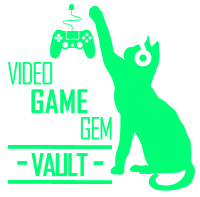What and Where is the Nintendo Product Code on a DS and 3DS Video Game Cartridge and Case?
A Nintendo product code or (sometimes referred to as the MPN) for Nintendo DS and 3DS games is a unique identifier printed right on the cartridge label, box, and manual — used to catalog and differentiate each title. Think of it like Nintendo’s internal cataloging system. This helps collectors and sellers (and curious gamers) figure out exactly which version of a game they have — whether it’s North American, European, or Japanese. (Usually, there are other obvious dead giveaways) And just like PlayStation has their SLUS, SCUS, and BLUS codes (but that’s a whole different blog! 😉), Nintendo kept their own system consistent across these handhelds.
The format looks like this:
NTR-XXXX-XXX (for DS)
CTR-XXXX-XXX (for 3DS)
Breakdown:
- NTR = Nintendo DS hardware codename, “Nitro.”
- CTR = Nintendo 3DS hardware codename, “Centra.”
- XXXX = Four-letter game code.
- XXX = Three-letter region code, like USA for North America, EUR for Europe, or JPN for Japan.
- 1 = Sometimes, you’ll spot a number at the end for later revisions (usually for bug fixes).
Fun fact (Depending on your idea of fun):
Nintendo loves internal codenames. "Nitro" was the internal name for the DS while they were developing it, and early dev kits and materials actually called it the Nitro system!
For the 3DS, "Centra" was the codename — even though you’ll never see this in marketing, it’s baked right into every cartridge and packaging code as CTR.
If you’re curious, Nintendo's always done this:
- The GameCube was "Dolphin."
- The Wii was "Revolution."
- And they carried on the tradition with the DS and 3DS! Nintendo tends to get it right. They alter things, sure, everyone does. But, they don’t have a ton of mess ups under their belt and that’s why they are a powerhouse! I always wondered who would win… Nintendo lawyers or Disney ones?
Example for DS:
For Mario vs. Donkey Kong: March of the Minis (North American NTSC-U/C version), the product code is:
NTR-ADME-USA
- NTR = Nintendo DS system
- ADME = Code for March of the Minis
- USA = Region code
Example for 3DS:
For Super Mario 3D Land (North American version), things get a little interesting!
-
On the cartridge:
LNA-CTR-AREE-USA -
On the case (by the barcode):
CTR-P-AREE-USA
Nintendo uses two codes:
- LNA = Cartridge media code (refers to the actual game card).
- CTR-P = Packaged product code (for the case and manual).
This is normal! What matters most is that the middle code (AREE) matches across the case, manual, and cartridge. That’s how you know your set is original and matching.
As with Super Mario 3D Land, there are multiple North American variants, and the product code reflects that. These codes are printed directly on the cartridge label, but you’ll also spot them on the case and manual, which is super helpful when checking if a game is complete and original.
"Above the barcode on the back of 3DS cases, you’ll spot a six-digit number with an 'A-' in front. This is a factory production code for the packaging itself. This number changed on the first print of Super Mario 3D Land and Nintendo Select Variants, but the product code did remain the same - in terms of this title. While it isn’t part of the official product code, hardcore collectors sometimes use this to track different print runs or spot potential replacement cases. If you're curious about variations, it's another detail worth keeping an eye on!"
On the case, check the back near the barcode and legal fine print — sometimes just above the UPC or beside the Nintendo Seal of Quality. On the manual, it’s usually printed on the back cover at the bottom or inside on the credits page with the legal text. Nintendo is very uniform (and let’s be honest, kind of obsessive), so they update cases, inserts, and cartridges to match these codes. Sega... not so much. Sega, I love you, but you were a beautiful disaster with the Genesis when it came to seals and consistency!
Collectors, sellers, and even just curious owners use these product codes to confirm the exact region or version of a game. More importantly, it’s a great way to help verify if your game and artwork are authentic. Reproductions are everywhere. Some people make pretty convincing fake artwork! If the code doesn’t match a verified authentic copy — or even a reference like PriceCharting.com — you might be looking at a reproduction, or in rare cases, a factory error. Whether you’re hunting down every last title or just curious about your collection, it’s a handy little detail to keep an eye on.
Are you looking to expand your Nintendo DS video game collection? Browse our authentic and clean Nintendo DS selection!
Did we miss anything? Get something wrong? Drop a comment or contact us. Because as I keep saying, "The day you know everything is the day you know nothing at all!"
Happy Gaming! - Lauren
Video Game Gem Vault
1231 E. Michigan Ave
East Lansing, MI 48823
Phone: 269-213-5006 (Call or Text)
Email: play@videogamegemvault.com
Website: Videogamegemvault.com



